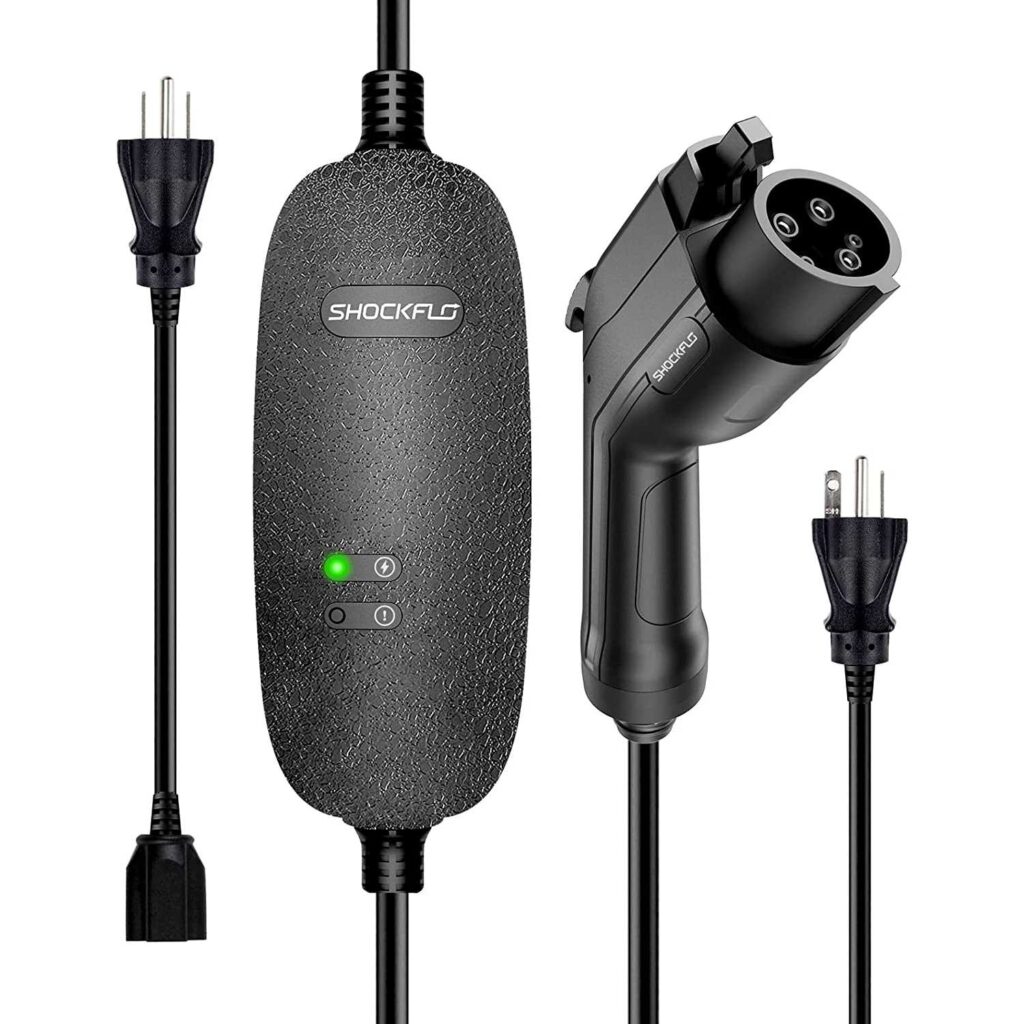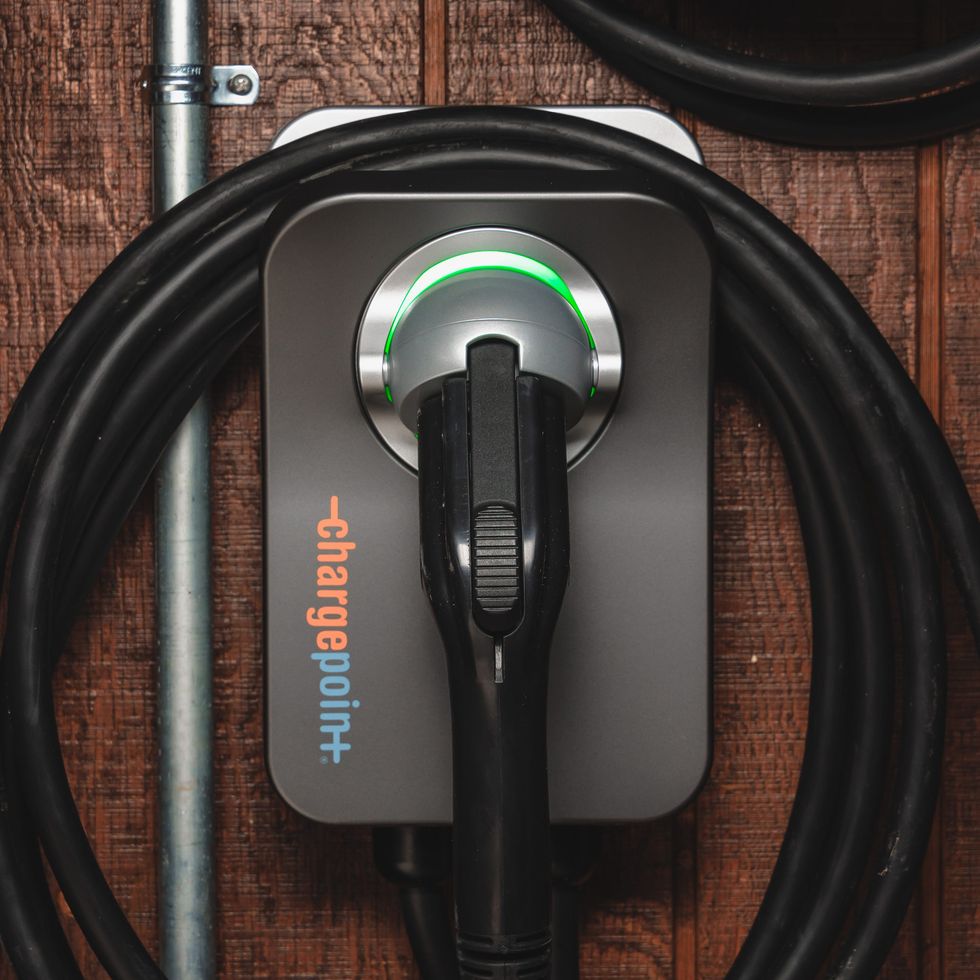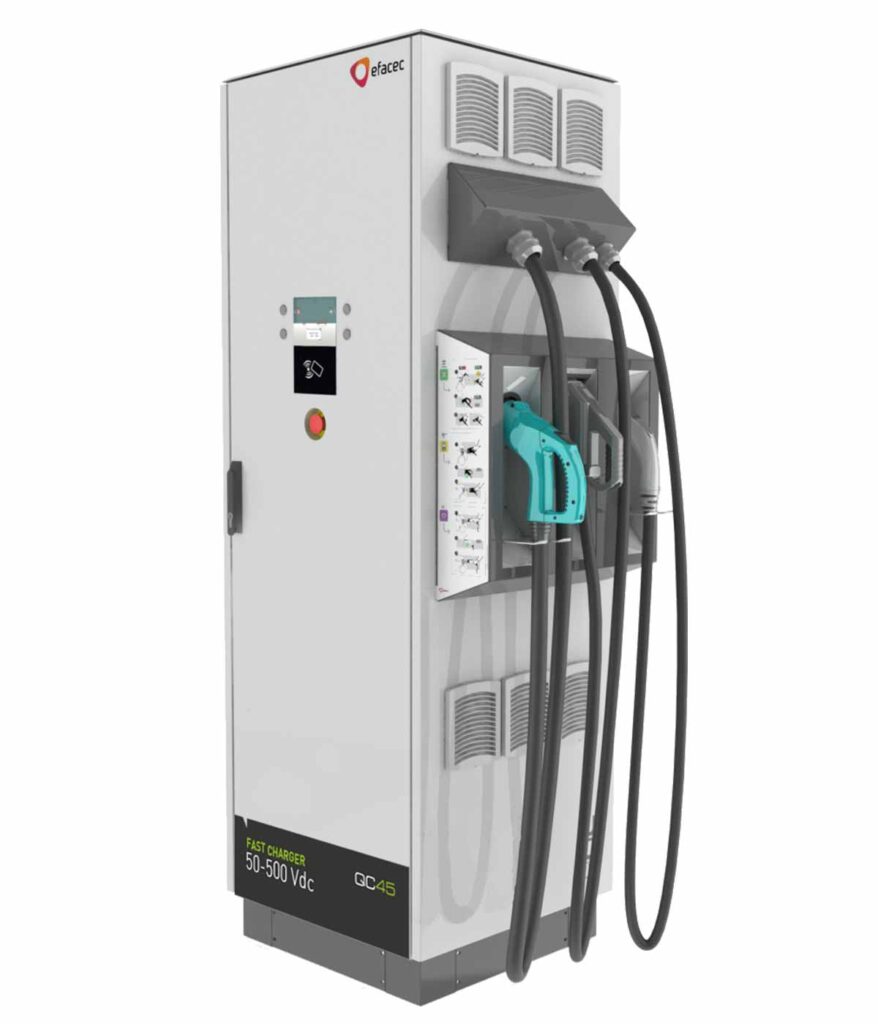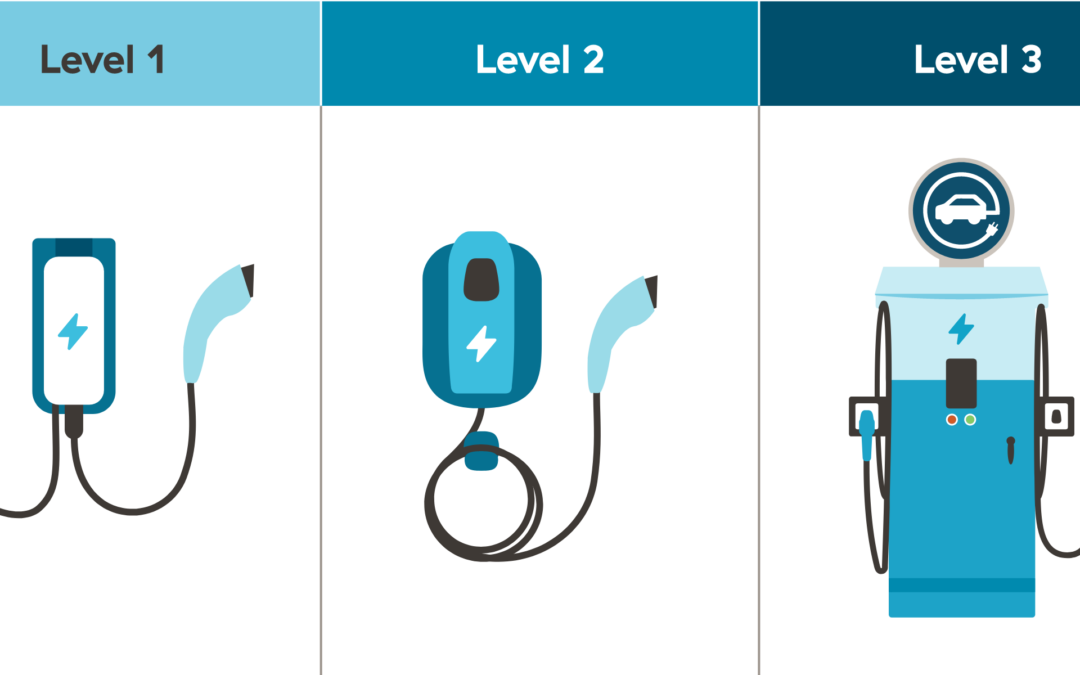The electric vehicle lexicon is daunting for newbies.
One set of terms I wish I’d understood sooner is charging “level.” People talk about level 1, level 2, and level 3 chargers all the time without clarifying what they mean.
You don’t need a degree in electrical engineering to understand the distinction between the three charging levels. But they do overlap a bit, and the details can get confusing. And you will almost certainly use all three levels at some point in your electric vehicle journey. You might as well get them straight before it’s absolutely necessary.
This is my attempt to help, beginning with a quick rundown of terms you’ll need to know to distinguish level 1 from level 2 from level 3 charging equipment.
What do all these abbreviations mean?
This post deploys some possibly unfamiliar abbreviations. Here’s what they mean:
- kW: Kilowatt, or 1,000 watts. It’s a measure of energy transfer rates where electricity flows are relatively high, as in EV charging.
- kWh: Kilowatt-hour, or an amount of electrical energy equal to 1 kW consumed over a period of one hour.
- AC: Alternating current, one of two modes of electricity flow. AC flow varies in magnitude and periodically change direction. The best visual for this is a sine wave. Because it’s slower and gentler on EV batteries, AC is the preferred charging mode for everyday use.
- DC: Direct current, the other mode of electricity flow. DC flow goes only in one direction (into the battery) and is much faster than AC flow, so it’s better for charging on road trips and other scenarios where time is of the essence. But it’s rougher on EV batteries over time.
- V: Volts or voltage, a measure of electrical capacity. EV chargers operate at different voltage levels, depending on their charging capacity. In the United States, Level 1 chargers generally work on 110/120V and 240V outlets, while Level 2 chargers work only on 240V outlets.
If you’re still new to the EV world, rest assured you’ll see these terms often as you dive deeper. The sooner you get them down, the sooner you’ll be able to understand and evaluate EV data and claims.

Level 1 chargers at a glance
- Charging speed: 2 to 7 miles per hour.
- Electrical output: ~1 to ~3.5 kW AC.
- Outlet: 110/120V (standard North American wall outlet). Three-pronged plug directly into the outlet.
- Upfront cost: Most new and used EVs come with a level 1 charger at no additional cost. Higher-output Level 1 chargers retail for $100 to $200.
- Charging cost: Standard electric rate for the charging location. Ranges from under 10 cents per kWh to over 30 cents per kWh .
- Where to find them: Included with your vehicle and ready to plug into any 110/120V (or higher) wall outlet.
What is a level 1 charger?
A level 1 charger is a portable system that includes:
- A vehicle plug
- A three-pronged wall plug
- A shoe-sized box near the wall plug that shows charging status and possibly other information
- Cords running from the vehicle plug to the box and the box to the wall plug, both a bit thicker than a vacuum cleaner cord
Some folks call level 1 chargers “portable chargers” or “emergency chargers.” The first name’s origins are obvious. You can take it wherever you go, including on overnight trips away from home.
The second name refers to a critical limitation of level 1 charging: It’s very slow.
The realistic best-case scenario — an efficient car plugged into a dedicated outlet in a house with low electrical load — is maybe 4 to 5 miles of charge per hour, or 40 to 50 miles on a 10-hour overnight charge. That might be enough to restore a plug-in hybrid to full charge, and perhaps for daily full-EV use in good conditions. But most full-EV owners can’t bank on level 1 charging alone.
The upside is that most level 1 chargers cost nothing. They come with new EVs and plug-in hybrids. Ditto for used EVs and plug-ins, as long as the previous owner didn’t lose theirs. Make sure you ask before driving off, especially if you don’t yet have another way to charge at home.
If you do lose your level 1 charger or need a spare, you can buy one off the shelf. Newer premium models may charge a bit faster than basic “free” ones, with scraping level 2’s lower bounds. This one ($179 new in Dec. 2023) puts out up to 3.5 kW, which could be good for 10 to 15 miles per hour on a reasonably efficient car.

Level 2 chargers at a glance
- Charging speed: 10 to 40 miles per hour. Higher-output models can fully charge a vehicle overnight.
- Electrical output: ~3 kW to ~20 kW AC.
- Outlet: 220/240V (standard North American “dryer outlet”). May be hardwired to a dedicated circuit or plug directly into the wall socket, depending on the model and configuration. Most electricians recommend hardwiring.
- Upfront cost: $200 to $1,000 or more for the charger itself, but some electric utilities offer monthly rentals with no upfront purchase required. Professional hardwiring can cost anywhere from under $500 for simple jobs to more than $2,000 for complicated jobs that require lots of new wiring.
- Charging cost: Varies. Some public chargers are free, at least for the first hour or two. Other public stations charge by the hour or kWh, typically working out to $2 to $4 per hour in either case. Some electric utilities offer discounted rates for overnight charging and premium rates for midday charging: I pay as little as 2.8 cents/kWh for overnight charging or up to 22.6 cents for midday charging. Otherwise, home charging bills at the standard electric rate.
- Where to find them: Many EV owners install level 2 chargers at their homes for overnight charging. Find public chargers at multifamily residential parking areas, shopping center parking lots, workplaces, public parking garages, and in designated street parking spots.
What is a level 2 charger?
A level 2 charger is a fixed charging station that charges faster than level 1 chargers but much slower than most level 3 chargers.
If you have a garage or driveway, you can probably install a level 2 charger at home, though you may need to install additional wiring or make other electrical upgrades first. Hire a licensed electrician to do this work unless you are one yourself — it’s worth the cost to reduce fire or electrocution risk.
In-home level 2 chargers tend to be faster than public level 2 chargers. Some deliver 15 kW or higher, while many public chargers top out at 10 kW or less.
That’s an issue because most non-Tesla public charging stations are level 2. This is changing slowly as more non-Tesla Level 3 chargers come online, but for now, it’s risky to rely only on public chargers if you don’t drive a Tesla.
Level 2 chargers are smarter than level 1 chargers. You can program your home charger to deliver power only at certain times of day. This is useful if your utility offers discounted off-peak charging. Likewise, some public charger networks have mobile apps through which you can manage your charging sessions, even if you’re not near the vehicle.
About those charger networks: There are several. As soon as I bought my EV, I made a list of charging networks serving my home region and downloaded each app. I’d recommend doing the same to reduce friction when you’re out and about.
Mind public charger time limits and time-of-day restrictions. Some public chargers limit plug time, often to 4 hours, so that the same drivers don’t hog them all day. Some (often the same ones) also prohibit overnight charging, say between 10pm and 6am. (Don’t try it — the plugs simply don’t work during restricted hours.)
Finally, note that some “public” chargers are reserved for authorized users, like tenants or employees of the property where they’re located. These restrictions aren’t always clear in the charging app or your in-vehicle navigation system. A good rule of thumb: If the charger appears to be in a restricted-access parking area or a lot reserved for users of a particular building or complex, it’s probably not for general use.

Level 3 chargers at a glance
- Charging speed: 100 to more than 1,000 miles per hour, or ~25 to ~90 minutes to a full charge on most vehicles.
- Electrical output: 50 kW to 400 kW DC or higher. Newer chargers generally put out at least 150 kW.
- Outlet: 480V and up. Due to cost and capacity constraints, level 3 chargers don’t make sense for most private residences.
- Upfront cost: $40,000 and up, depending on capacity. “Commercial use only,” for real.
- Charging cost: ~15 to 60 cents or more per kWh, depending on the brand, output, and local electricity costs. Full-charge costs still tend lower than equivalent fill-up costs for internal combustion vehicles, but it’s usually more expensive than charging at home.
- Where to find them: Commercial fueling stations, shopping centers, highway rest areas, fleet vehicle hubs, and other high-traffic commercial locations.
What is a level 3 charger?
A level 3 charger is a fixed station that can deliver a full charge in as little as 25 to 30 minutes. It looks like a cross between a gas pump and a utility box.
Level 3 chargers are for commercial use only. Due to electrical service limitations in most residential neighborhoods, you probably couldn’t install one at your home if you wanted to. You’d likely find it cost-prohibitive in any case. Fortunately, level 3 chargers are increasingly common at fueling stations, Interstate highway rest stops, and busy shopping areas.
The best-known level 3 brand is the Tesla Supercharger, of which there are about 50,000 and counting worldwide. For now, non-Teslas can use the Magic Dock adapter at a limited, slowly increasing number of Superchargers. Beginning in 2024, most major automakers selling into the North American market will offer Supercharger-compatible ports (North American Charging Standard) on new vehicles and adapters for existing vehicles.
A parallel effort is underway to build out non-Supercharger level 3 infrastructure. The federal government is deploying billions on a brand-agnostic construction campaign to outfit high-traffic stops with fast chargers. Electrify America is putting cash left over from Volkswagen’s Dieselgate settlement to similar use, albeit with uneven results.
These efforts are unfolding more slowly than many EV owners would like. Finding an unoccupied, operational level 3 charger remains challenging for non-Teslas.
Use the PlugShare app, the ChargePoint app, and the Electrify America app to locate stations near your home and on planned road trip routes and to learn how to pay for charging. Payment processes vary across and sometimes within charging networks.
Newer level 3 chargers can deliver up to 400 kWh, but many EVs can’t accept power at anywhere near the full rate. The famously pokey Chevy Bolt accepts DC flow at no more than 55 kW, for example, which works out to about an hour to go from 0% to 80% state of charge.

